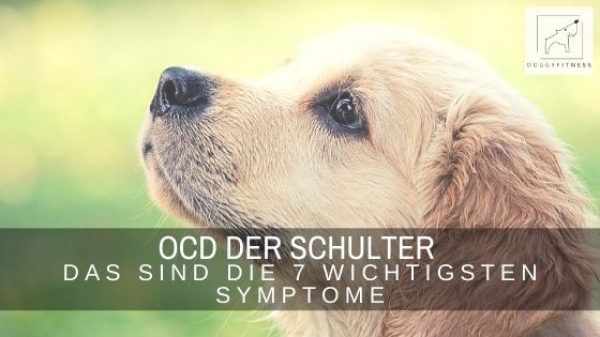At first glance it sounds surprising, but there are several joint diseases that affect even young dogs. This also includes OCD of the shoulder. It is one of the typical young dog diseases that occur between the 4th – 9th month of life. In most cases, the shoulder joint is affected. In principle, OCD can also occur in the knee joint, elbow or ankle joint. However, joints that are exposed to particular stress are always affected. OCD symptoms
What exactly does OCD mean?
OCD is a growth disorder. The cartilage increases in thickness unevenly. Thus, cartilage and bone mass that lie underneath are no longer adequately supplied and die. If a greater load is now applied, the cartilage tears. The synovial fluid now penetrates the gap created. This prevents the detached piece of cartilage from healing again. It now swims around freely in the joint. It also prevents full mobility of the joint and triggers pain during movement. Osteoarthritis develops in the affected joint.
But how does OCD show up in the joint? I have summarized for you the main signs of OCD in dogs. This way, you can act quickly if your dog shows one or more of the symptoms mentioned.
What are the symptoms of OCD?
The first symptoms usually appear very early, between the 4th and 9th month of life.
- The dog show a lameness – usually after stress.
- It turns the affected barrel outward, pressing the upper arm against the body.
- The joint shows signs of inflammation and is warm and swollen.
- When bending and stretching, the dog shows clear signs of pain.
- The stride length is shortened and the mobility of the run is limited. Affected dogs avoid jumps, for example. And other movements that impose a heavier load.
- In the course, affected quadrupeds clearly lose muscle in the affected front leg.
- Due to the relieving posture and overloading, tensions form in the remaining areas of the body – which in turn are also painful.
Often, the symptoms are first thought that the quadruped has represented itself. Of course, this is also possible. However, if your dog shows one or more of these symptoms and they do not go away after 1-2 days of rest, you should definitely have him examined by your veterinarian.
Want to learn more about OCD of the shoulder? In the article OCD of the shoulder – the clinical picture I have compiled extensive information about the clinical picture around diagnostics, treatment options, etc..
All the love, your Tina
Dieser Beitrag ist auch verfügbar auf:
Français (French)
Deutsch (German)
Español (Spanish)
















